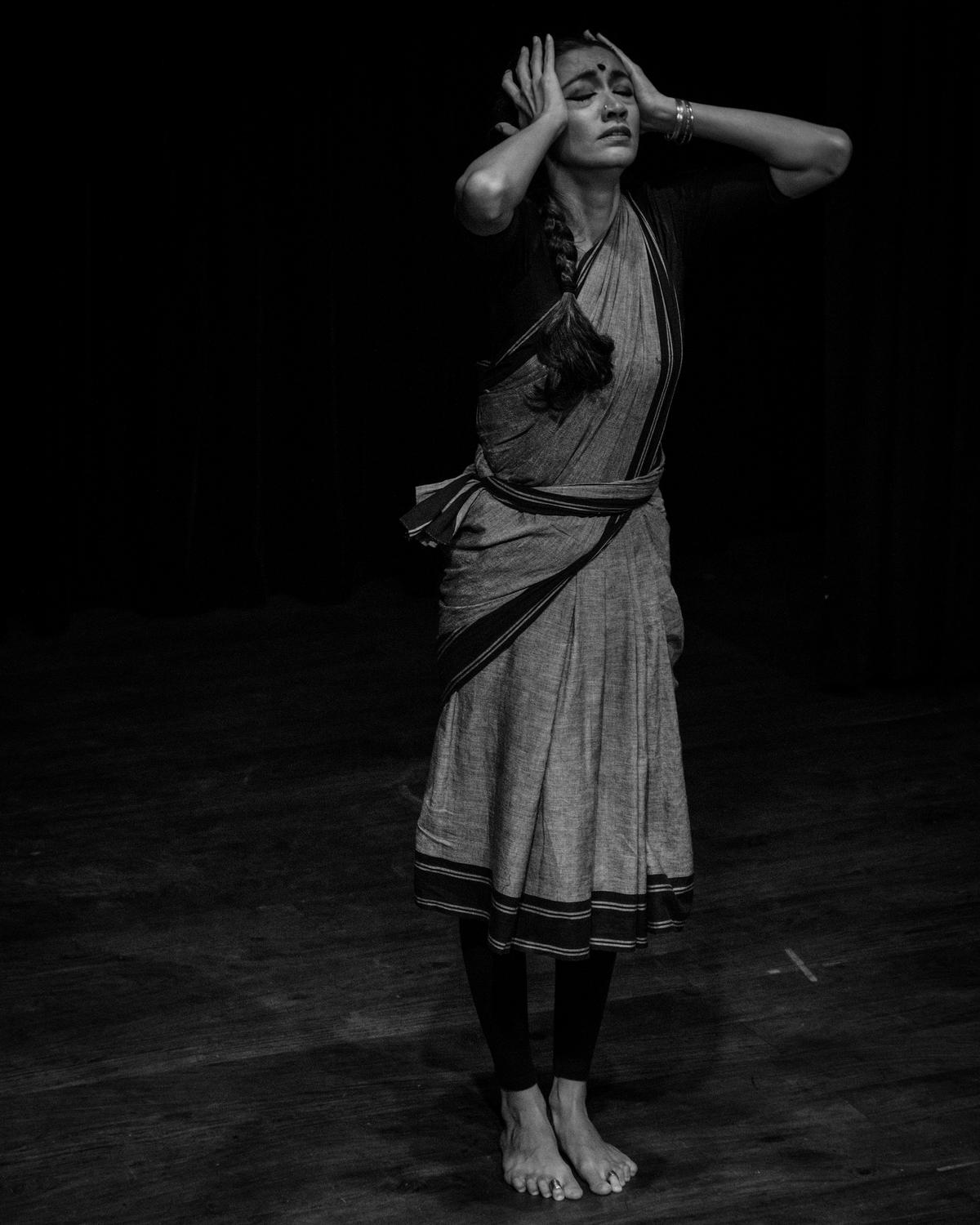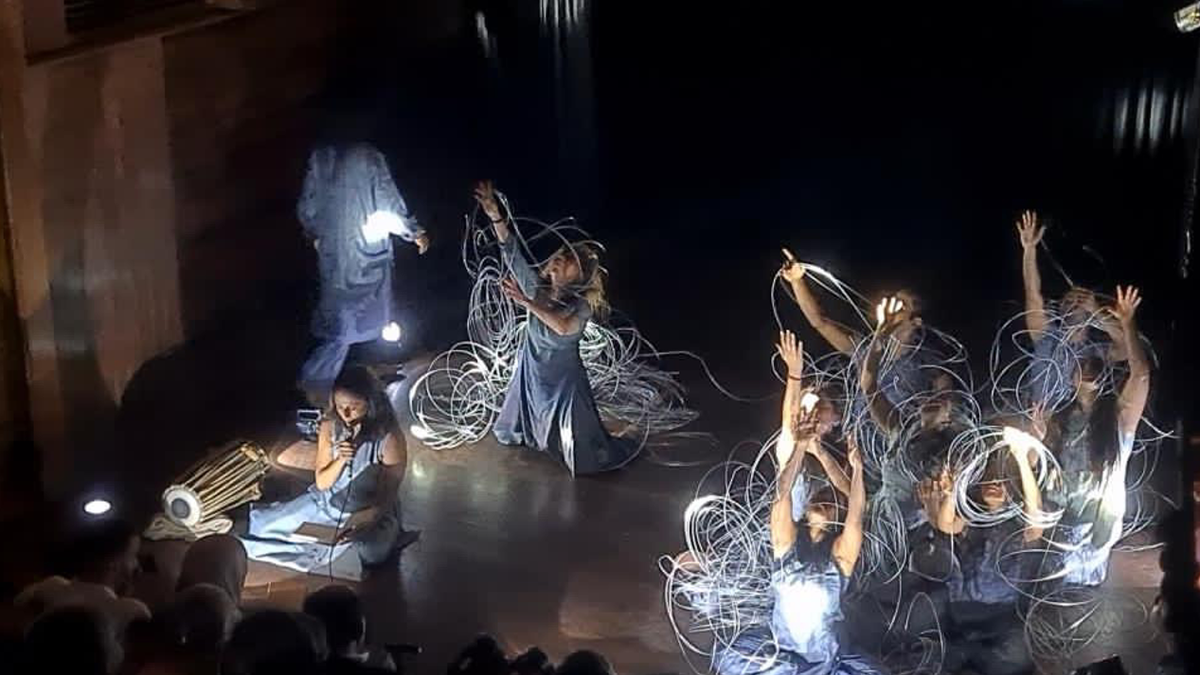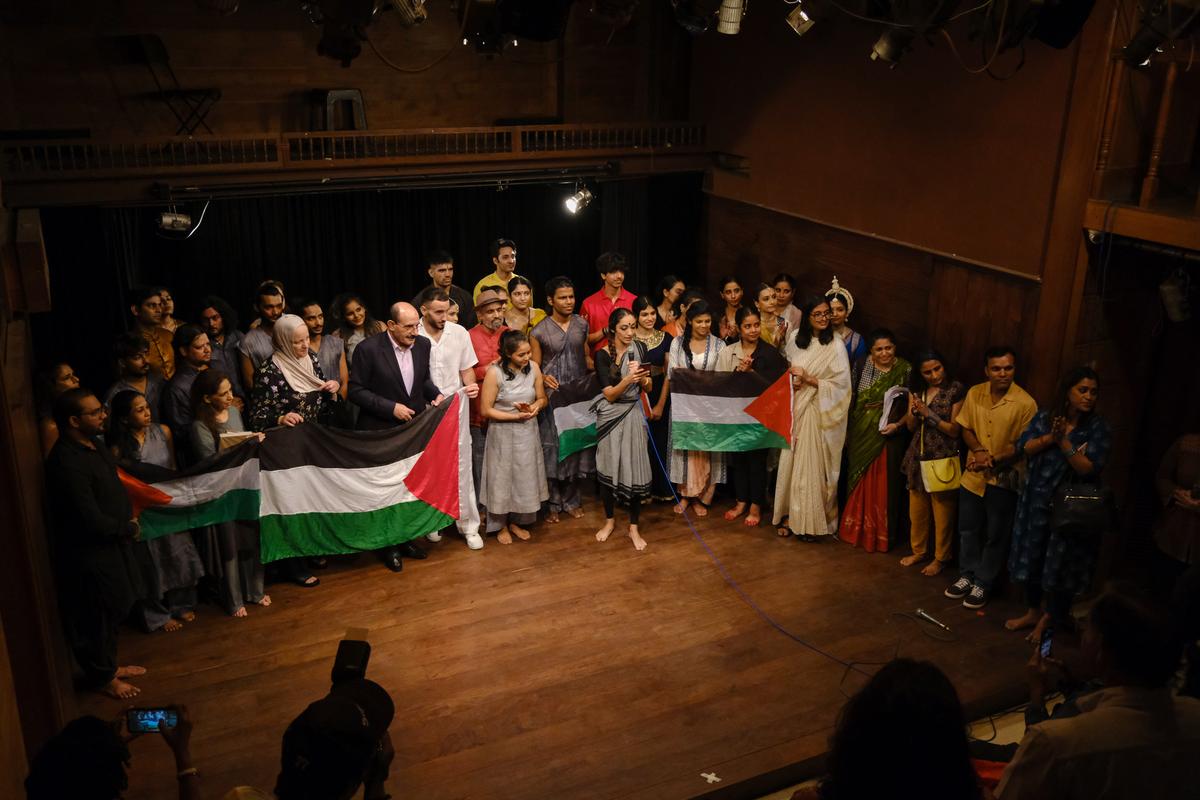[ad_1]

A dance performance from the show in Kolkata
| Photo Credit: Adrija Samal
Last month, the late Pakistani poet and author Faiz Ahmed Faiz’s poem titled ‘A lullaby for a Palestinian Child’ birthed a poignant Bharatanatyam performance in Delhi. Titled Lori, the movement piece was Bengaluru-based Aranyani Bhargav’s attempt at making sense of a brutal conflict, and more so, its bearing on children. She was just one of the many performers — spanning mediums and years of experience — who came together that evening for the brutalised children caught in the crossfires of the Israel-Palestine war. And it was one of 18 such evenings, world over, that artists’ collective Indian Dancers for Gaza’s Children (IDGC) led, to raise funds as well as create a platform for collective outrage, and healing.
Being mute spectators to a deafening conflict and the subsequent loss of lives many miles away is jarring. Right from October-November 2023, shortly after the war began, Bhargav, co-founder of IDGC along with South African dance scholar and activist Donovan Robert, was itching to react. The question was how. “What really struck me was the fact that there is so much targeted violence against children in this conflict. It was unprecedented,” she says. “Wars are supposed to be fought between armies. Why are children involved?”

Aranyani Bhargav’s Lori
| Photo Credit:
Dinesh Khanna
Raising their voices
Propelled by a feeling of “absolute helplessness and horror”, Bhargav and Robert decided to try and bring the Indian classical dancers’ community — if not the artists’ community in its entirety — together to raise their voice. She wrote a WhatsApp message to all the dancers she knew and garnered a list of petitioners to start off the conversation. “Initially, the responses were cautious, but we got some early on from quite a few prominent names, like Kathak choreographer Aditi Mangaldas. This was encouraging,” she says. “In the first 15 days, we were seven to eight people; within a month, we were at 200. Currently [at the time of writing this], we are at 760 from 28 different countries.”

A performance from Delhi
An artistic performance from Kolkata
The movement then grew beyond social media into a physical form. Dance as a medium quickly became a cog in this wheel. “Donovan and I started identifying charities that we could support and we got in touch with The Jerusalem Princess Basma Centre. It aligned with our cause, since our focus was on children [all who are caught in the war], as was theirs. They are the only paediatric rehabilitation facility for Palestinian children with disabilities,” shares Bhargav. “We put out calls expressing interest in organising events all over the world. The response was overwhelming. What I thought was silence didn’t turn out to be silence at all.”

At the New Delhi show with the Palestinian Ambassador to India, Adnan Abu Al-Haija
| Photo Credit:
Dinesh Khanna
Outrage, pain and peace
From dance workshops to curated showcases, the money raised was used for donations. Apart from India — in Bengaluru, Mumbai, Pune, Goa, New Delhi and Kolkata — the movement took shape in Poland, Canada, the U.S. and France in the form of artistic performances. “The work was done by overseeing and managing 16 WhatsApp groups classified according to the cities and countries where events could possibly take place,” says Bhargav. There were artists who created pieces based on unity, and around calls for peace. “But for a lot of people, these pieces were also a means to express angst, pain and outrage over what was happening.”
So far the collective has raised over $11,500 for the charity. Going forward, Bhargav assures that it will contribute to any conflict (that demands the most attention) in whichever way they can. “When there is a moral crisis in society, it is our responsibility as artists to respond,” she concludes.
gowri.s@thehindu.co.in
Published – September 20, 2024 08:55 am IST
[ad_2]
Source link


